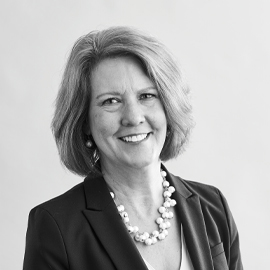December 2022
How Businesses Can Protect Against Check & ACH Payment Fraud
Paper checks and automated clearing house (“ACH”) payments remain ever-present in the commercial payment landscape. Unfortunately, “fraudsters” continue to infiltrate these forms of payment. The 2022 Payments and Fraud Control report, underwritten by JP Morgan, found that checks and ACH debits were the payment method types most affected by fraud activity (66% and 37%, respectively).
Check Payments and Fraud
Overall, levels are decreasing, but paper check payments remain the preferred payment method for businesses. Thus, check fraud remains the most prevalent form of payment fraud. This year, as we have all heard in the news, the old-fashioned mailbox has become a target. Thieves get their hands on mailed checks and either sell them on the black market or “wash” them by replacing the amounts and payees. However, there is good news. According to the Payments and Fraud Control report, the overall percentage of companies that reported being subjected to check fraud or attempted check fraud has decreased since its high in 2018.
We can attribute the reason for the decrease to:
1. More companies using
Check Positive Pay (a bank-offered fraud control service).
2. More companies are implementing daily reconciliation processes.
3. Many companies shifting paper payments to ACH.
4. Decreasing checks as a percentage of commercial payments overall.
ACH Payments and Fraud
In 2021, the
ACH Network processed 29.1 billion payments, marking the seventh consecutive year in which it added over 1 billion new payments. Those included direct ACH deposit of salaries, dividends, and Social Security. It also encompasses direct ACH payment for bills such as utilities and mortgages, as well as charitable giving, tuition, subscription services, and business-to-business (“B2B”) payments. The total value of these payments was close to $73 trillion. Many companies are replacing checks by originating their own B2B payments via the ACH network. Even more companies are on the receiving end of ACH payment transactions originated by their trading partners and other vendors.
Over time, using fewer checks and implementing more fraud controls has helped to decrease the overall percentage of fraud committed using checks. This, however, has contributed to ACH as a percentage of overall payment fraud to be on the rise. Fraudsters realize that more and more companies are out in front of check fraud, but that ACH payments might still be vulnerable.
Tools to Combat ACH Fraud
Businesses can get out in front of fraudulent ACH transactions by implementing services to monitor their payments. ACH filters and blocks help to prevent unauthorized or fraudulent ACH payment transactions originated by a third party attempting to pull funds from an account other than their own. Like Check Positive Pay, an ACH filter or block stops the fraud up front before it ever hits the bank account.
Businesses that originate ACH payments are at risk of Business E-Mail Compromise (“BEC”) scams. In a BEC scam, criminals send an email message that appears to come from a known source making a legitimate request. Many times, scammers leave the e-mail itself untouched but change the banking information on the invoice attached to the e-mail. It looks very real and certainly not as obvious as in the past when misspelled words and poor grammar were used to direct originators to send funds.
Tips for Preventing and Combating Fraud
We continuously adopt new technologies and processes for online transactions. Here are five prevention tips to help fend off fraud:
- Call the party requesting a payment to verify the instructions. Always use a phone number on file versus one provided in a request.
- Maintain current vendor information for anyone authorized to change payment instructions.
- Educate and train employees to recognize, question, and authenticate changes in payment instructions.
- Never confirm new bank information via email.
- Limit the number of employees authorized to initiate ACH transactions and use dual controls when originating. The more eyes on the transaction, the better.
By working with financial institutions and law enforcement, it's possible to reduce and prevent fraud. Clients can empower themselves to avoid becoming victims by being proactive with their processes and procedures and continuing to educate employees on the signs of fraud.
DISCLAIMER: This newsletter is intended to provide thought-provoking commentary. The information presented herein has been obtained from and is based upon sources and vendors deemed to be reliable, but may be incomplete. Parkside Financial Bank Trust does not itself endorse or guarantee, and assumes no liability for, the accuracy or reliability of any third party data or the financial information contained herein.
Parkside Financial Bank Trust is not a tax advisor. All decisions regarding the tax implications of your investments should be made in consultation with your independent tax advisor. We will work with you independent tax and/or legal advisor(s) to help create a plan tailored to your specific needs. The material contained herein is for informational purposes only and does not constitute tax advice. Investments are not insured by the FDIC or any federal government agency, provide no bank guarantee, are not a deposit and may lose value.



